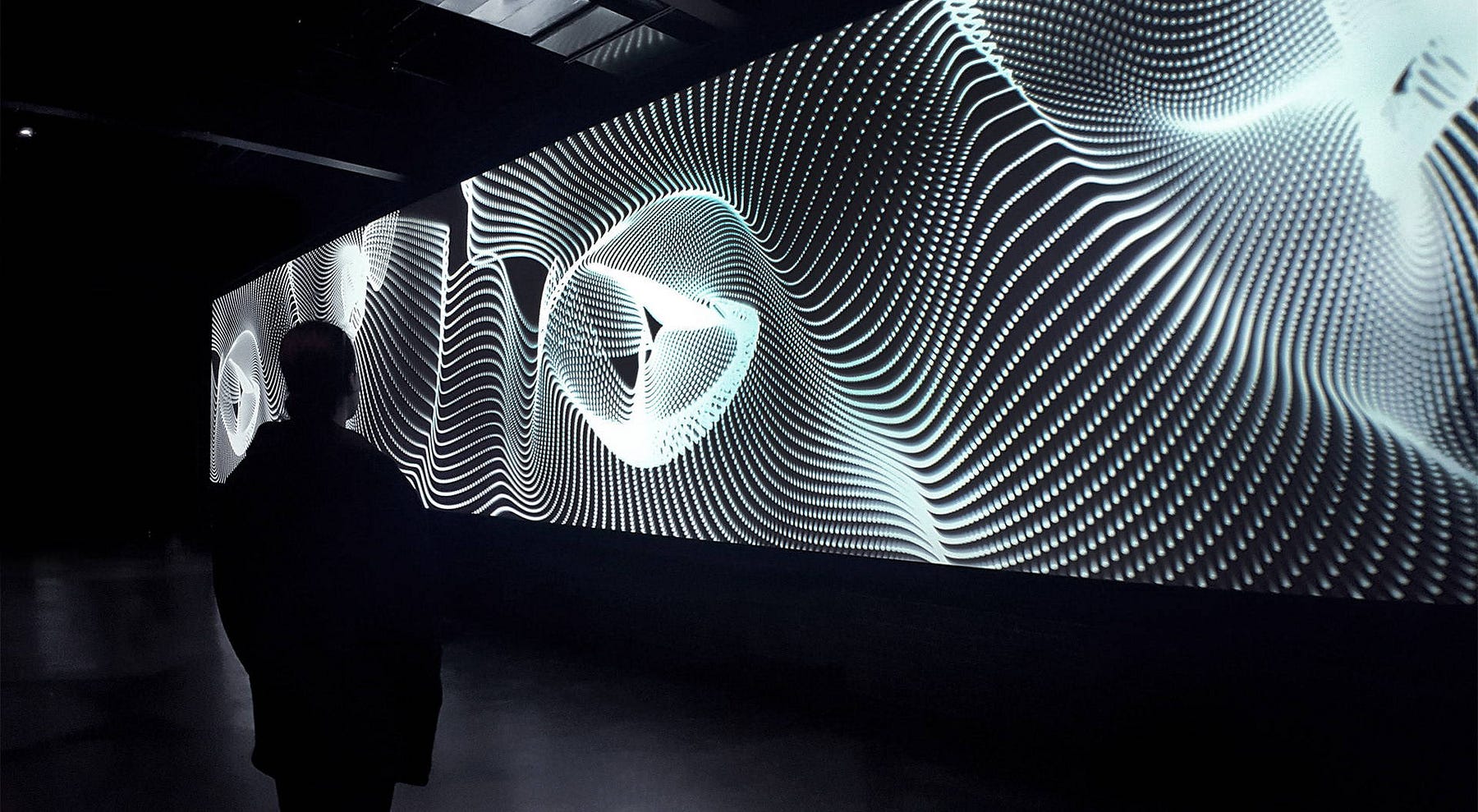COLLECTING DIGITAL ART
Featured Image by Jeff Cole of Ikonick
Though the beginnings of digital art can be traced back to the 1950s, many art critics and art collectors alike still consider digital art a new and relatively unfamiliar art type. However, with the development of new technologies that are becoming more accessible every day, many artists are experimenting with digital art, making incredibly versatile, mesmerizing, cutting-edge artworks. From David Hockney’s iPod drawings to Addie Wagenknecht’s digital installations (sold at a Phillips auction for $16,000), it seems that digital art is finally taking its well-deserved spot on the art market.

But What is Digital Art Exactly?
Digital art encompasses a wide variety of artworks that involve the use of digital technology in their creation or presentation process or both. The invention of computers, tablets, and other digital technologies have revolutionized the way art is made and exhibited. Instead of acrylic and canvas, digital artists paint on screens with pixels. Instead of paper and glue, collages are made from digital imagery and graphics. And rather than exhibiting in galleries, digital art is often showcased on the Internet.
Certain digital artworks are created with the use of a computer and other types of digital technologies, while the presentation of the artwork remains analog. Digital prints and photographs, for instance, are made in the digital world, but when finished, they get transferred to a physical form — printed on paper, canvas or fabric, and can be transported and sold like any other artworks.
Other artworks, however, never leave the digital world. They are made on computers and presented on the screen. This particularly goes for GIFS, video artworks, and pixel art.
Digital art also encompasses digital installations, like the famous 2012 installation Rain Room that used digital technology to create the downpour of rain, whose drops dodged visitors.
Since digital art can range from affordable art prints and GIFs to large-scale installations that require expensive equipment, starting a digital art collection is achievable at any budget. But before you begin investing in digital art, there are certain things you should keep in mind.

Number of Editions
Digitally produced art can be reproduced in an unlimited number of copies without any damage or loss of quality. However, in order to make their works more exclusive, many artists are creating limited editions of digital artworks or even just one copy of an artwork. As with traditional prints, the size of the edition determines the price. The bigger the edition the lower the price and vice versa, so before you buy anything, make sure to check out how many different editions of the artwork there is on the market.
Certificate of Authenticity
Digital art can be easily counterfeited. Since digital art can be copied from the web, by using the exact same technology the artist used to create the artwork in the first place, these forgeries are exactly the same as the original artwork and impossible to tell apart. Digital drawings, paintings, and prints can be printed out on home printers, GIFs can be downloaded and multiplied to infinity.
That’s why when buying digital art, acquiring a certificate of authenticity is extremely important. Make sure to get the certificate directly from the artist or the gallery, proving that you are the true owner of the artwork. Without the certificate of authenticity, your digital artwork will be impossible to re-sell. Also as we written before, an increasing number of galleries are using the blockchain to certify digital artworks, as a safer way to authenticate art.
Getting to Know Digital Art Takes Time
Many digital artworks require time to understand an appreciate. GIFs, video works and many other types of digital art often require an extended attention from the viewer, who has to sit through an entire duration of the work. Though this can be inconvenient for a more impatient collector, watching a digital artwork several times before going through with the purchase is advisable, as this is the only way to determine how will you feel about it in the days to come- will you enjoy watching it over and over again, or will you get bored with it over time?

Delivering Digital Art
There are several different ways to deliver digital art to a buyer. Certain digital art pieces like prints and photographs, get printed and shifted to the owner just like any other artwork. But with works that exist in digital form only, things can be a bit more tricky. Digital art can be delivered physically on a USB, hard drive or a processor, that you can keep and store at your house, gallery or the vault.
The other way is to deliver it virtually, through the cloud, an online file-sharing service, or a special art platform. Sedition, for instance, is an art platform that sells digital artworks by some of the greatest artists of our time like Tracey Emin, Yoko Ono, and Damien Hirst. The artworks purchased through the platform are stored in a digital vault, that can be accessed from any connected device.
Consider Technical Requirements
Most digital artworks can be seen on a variety of screens- mobile, tablets, computers or even TV. But some digital artworks can be a bit more demanding and require projectors or high resolutions screens that can cost a hefty amount.
That’s why it’s important to inquire about the technical equipment you’ll need to exhibit the artwork. In a world that’s increasingly embracing 8k resolution, a proper exhibiting equipment can mean the difference between enjoying every subtle detail of the piece and seeing nothing but a big blur.
Digital art is documenting the reality of living in the contemporary, digital world. Today more than ever before we are accustomed to depositing our thoughts, feelings, projects, and ideas into the digital space. That’s why digital art is more than any other art form the art of today, and very likely the art of tomorrow. With almost unlimited possibilities and easy access, digital artworks are becoming increasingly desirable collectibles for art lovers worldwide.










